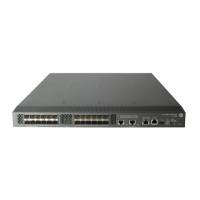324
[Sysname-bgp-af-vpnv4] peer test reflect-client
# In BGP-L2VPN address family view, configure the local device as an RR and the peer group test as the
client of the RR.
<Sysname> system-view
[Sysname] bgp 100
[Sysname-bgp] l2vpn-family
[Sysname-bgp-af-l2vpn] peer test reflect-client
# In VPLS address family view, configure the local device as an RR and the peer group test as the client of
the RR.
<Sysname> system-view
[Sysname] bgp 100
[Sysname-bgp] vpls-family
[Sysname-bgp-af-vpls] peer test reflect-client
peer route-policy (BGP-VPNv4 subaddress family view)
Description
Use the peer route-policy command to apply a routing policy to a peer or peer group.
Use the undo peer route-policy command to remove the application.
By default, no routing policy is applied to a peer or peer group.
Syntax
peer { group-name | ip-address } route-policy route-policy-name { export | import }
undo peer { group-name | ip-address } route-policy route-policy-name { export | import }
View
BGP-VPNv4 subaddress family view
Default level
2: System level
Parameters
group-name: Specifies the name of the peer group, which is a case-sensitive string of 1 to 47 characters.
ip-address: Specifies the IP address of the peer.
route-policy-name: Specifies the name of the routing policy, which is a string of 1 to 19 characters.
export: Filters the routes to be advertised.
import: Filters the received routes.
Examples
# In BGP-VPNv4 subaddress family view, apply the routing policy test-policy to the peer group test to
filter the received routes.
<Sysname> system-view
[Sysname] bgp 100
[Sysname-bgp] ipv4-family vpnv4
[Sysname-bgp-af-vpnv4] peer test route-policy test-policy import

